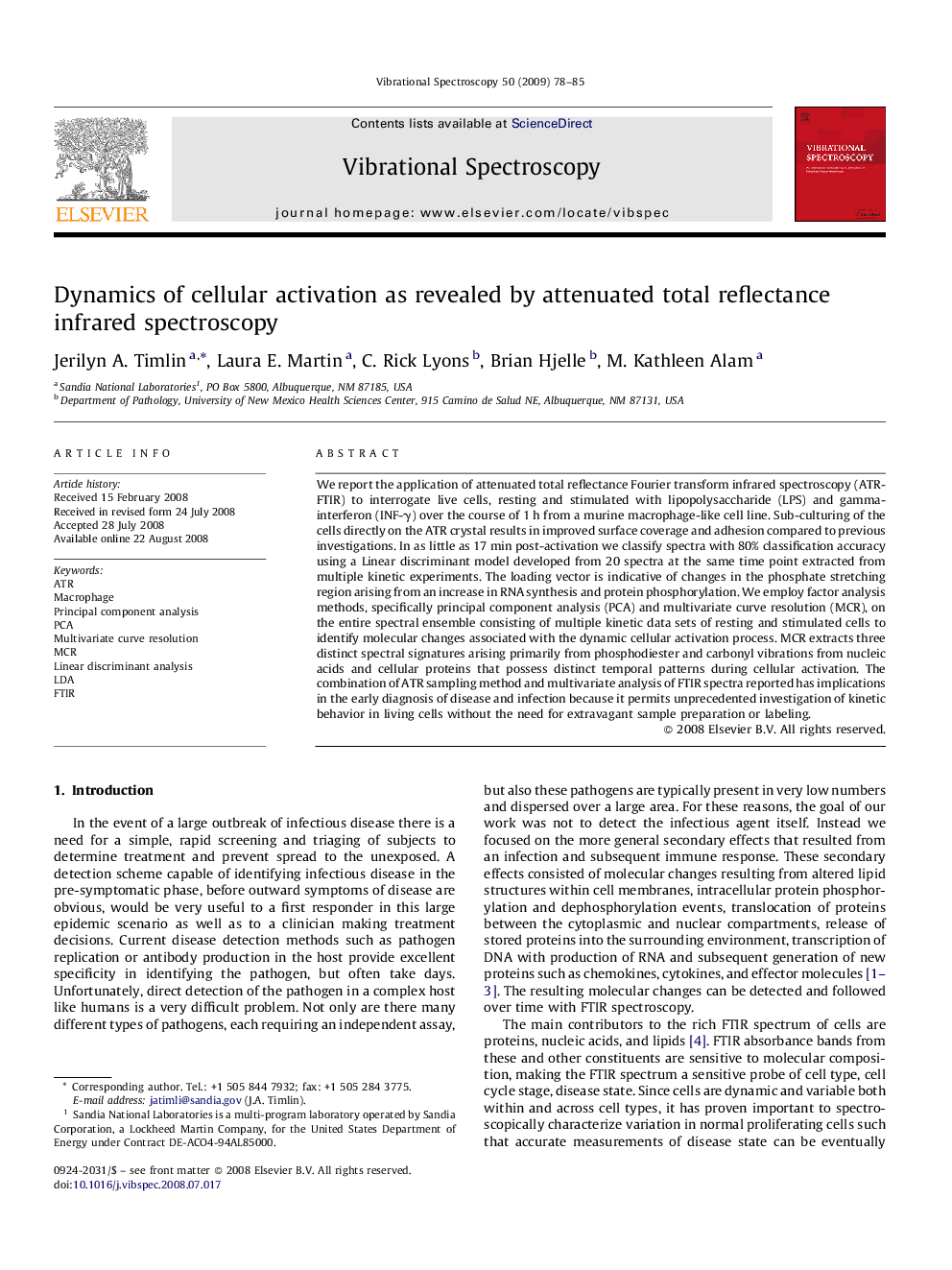| Article ID | Journal | Published Year | Pages | File Type |
|---|---|---|---|---|
| 1250779 | Vibrational Spectroscopy | 2009 | 8 Pages |
We report the application of attenuated total reflectance Fourier transform infrared spectroscopy (ATR-FTIR) to interrogate live cells, resting and stimulated with lipopolysaccharide (LPS) and gamma-interferon (INF-γ) over the course of 1 h from a murine macrophage-like cell line. Sub-culturing of the cells directly on the ATR crystal results in improved surface coverage and adhesion compared to previous investigations. In as little as 17 min post-activation we classify spectra with 80% classification accuracy using a Linear discriminant model developed from 20 spectra at the same time point extracted from multiple kinetic experiments. The loading vector is indicative of changes in the phosphate stretching region arising from an increase in RNA synthesis and protein phosphorylation. We employ factor analysis methods, specifically principal component analysis (PCA) and multivariate curve resolution (MCR), on the entire spectral ensemble consisting of multiple kinetic data sets of resting and stimulated cells to identify molecular changes associated with the dynamic cellular activation process. MCR extracts three distinct spectral signatures arising primarily from phosphodiester and carbonyl vibrations from nucleic acids and cellular proteins that possess distinct temporal patterns during cellular activation. The combination of ATR sampling method and multivariate analysis of FTIR spectra reported has implications in the early diagnosis of disease and infection because it permits unprecedented investigation of kinetic behavior in living cells without the need for extravagant sample preparation or labeling.
